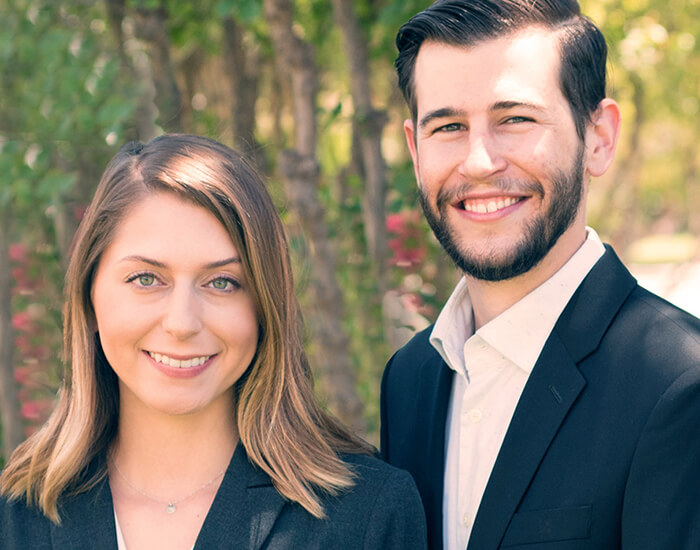It’s not every day that first-year PhD students present their work at an international professional meeting. But Keck Graduate Institute’s Andrew Burns and Corinna Doris did exactly that at ECI’s “Scale-up and Manufacturing of Cell-based Therapies V” conference held in San Diego in January.
“It’s always a big deal if students can present at an international meeting. Only outstanding students get this opportunity,” says Ian Phillips, KGI’s Norris Professor of Applied Life Sciences and director of the Center for Rare Disease Therapies.
The students’ poster presentation, titled “Characterization of a 3D Matrix Bioreactor for Scaled Production of Human Mesenchymal Stem Cells,” described their work on a new 3D approach to produce stem cells in high quantities for future clinical trials and novel treatments. Burns explains: “Stem cell culture is mainly done now in 2D. We’re trying to move that into the 3D space and do it in a controlled environment. We’re making a more habitable place for these cells to grow and giving them more space to do that.”
Their research was of immediate interest to the conference organizers. Burns recalls, “We had to send them an abstract, and they got back to us the next day, saying, ‘Yes, please do this.”
Phillips notes that millions of stem cells can be required in a single injection when used as a therapy for humans. By employing the 3D matrix technology, the students hope to grow these stem cells by the billions.
Both 2016 graduates of KGI’s Master of Bioscience (MBS) program and recipients of the Dennis and Linda Fenton Fellowship, Burns and Doris are conducting their work in the Amgen Bioprocessing Center laboratories at KGI under the supervision of a team consisting of Phillips; Parviz Shamlou, the center’s director and KGI’s George B. and Joy Rathmann Professor; KGI lecturer Cameron Bardliving; and Vinit Saxana, the founder and CEO of Sepragen Corporation, the students’ industry partner.
The students are bringing their respective strengths to the joint project. Burns, whose PhD research focuses on developing a scalable bioreactor for the growth of human cells, is responsible for the cell cultures. Doris, whose background is in bioengineering, contributes expertise in computational fluid dynamics (CFD) and modeling of the reactor itself. At the same time, she is pursuing independent work to design a perfusion bioreactor for use with both mammalian and human cells.
Currently, the students’ collaborative research is in a preliminary stage. Burns explains: “We’re beginning cell culturing, but we’re not in small-scale production yet. We’re in the steps before the small-scale model.”
Burns will be culturing human mesenchymal stem cells, one of the older and better- known cell lines available to researchers. Phillips, who has worked with these adult stem cells in the past, notes: “When transplanted, they don’t run into immune reaction issues, so they’re very useful in treating humans. They actually put out growth factors and can repair cells.”
In the meantime, presenting their research at an international conference has provided both Burns and Doris with a source of encouragement. Doris says: “It validated that what we’re working on is very relevant. The conference attendees were very interested in and appreciated the CFD characterization of the system because it’s not yet commonly utilized in the biotechnology industry. It was a very positive experience and motivated me to come back to work on a system that no one else is doing.”
